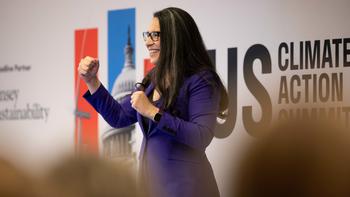The Marshall Liberal Government has tonight announced details of its bold land tax reform package – including an immediate slashing of SA’s top marginal tax rate from the highest in the nation at 3.7% to just 2.4% (which is the average of all mainland states) – which will benefit tens of thousands of South Australians who will pay either less or no land tax at all.
In fact, the proposed reforms – to come into effect from July 1, next year – will mean the overwhelming majority of ‘mum and dad’ investors (92% or 47,800 individuals) and company groups (75% or 7,900) will pay LESS land tax as a result.
The changes also increase the tax-free threshold from $391,000 to $450,000 and reform aggregation laws consistent with those in NSW and Victoria to reduce incentives for people to create complex legal structures in order to minimise land tax.
It is clearly unfair that someone can own $2-3 million in properties and yet not pay a single dollar in land tax.
In total, $70 million less land tax revenue will be collected by the Government over the three years from 2020-21 to 2022-23 under the historic changes.
Treasurer Rob Lucas said the Government’s decision to reduce the top land tax rate to an unprecedented 2.4% immediately from July 1, 2020 would drive positive economic and jobs growth, boost consumer and business confidence and make SA a far more attractive proposition for investors.
“For far too long, South Australia has been in the unenviable position of having the nation’s highest top marginal land tax rate, which has acted as a disincentive to investment and strong economic growth,” said Mr Lucas.
“Some investors have for years been preferring investing in other states because of the uncompetitive nature of our 3.7% top tax rate.
“Our reform will release this hand-brake on investment attraction, further boost business and consumer confidence, create jobs and put more money back into the pockets of hardworking South Australians.
“The vast majority of mum and dad investors, and company groups, who currently pay land tax will be financially better off as a result of the Marshall Government’s reforms.
“Just by increasing the tax-free threshold alone, more than 9,000 investors will no longer have to pay any land tax at all. In total, taxpayers will save $70 million over three years from our tax reform package.
“Our package, together with the impact of the abolition of stamp duty on commercial property transactions, sends a clear message that SA is well and truly open for business.
“The property industry has been calling for this for years.”
Under the changes, 8% or 4,300 individuals and 25% or 2,600 company groups will pay more land tax.
Mr Lucas said the significant top rate reduction was made possible by a larger-than-expected land tax revenue gain as a result of the aggregation measure, announced in the 2019-20 State Budget.
While the total amount of net land tax payable was always being reduced, it was originally estimated that the aggregation measures would generate an additional $40 million per year.
However, one of the purposes of the extended consultation period was to allow greater investigation and clarity on this estimate.
Access to more detailed information over the last 12 weeks, such as cross-referencing with ASIC data bases and TRUMP’s driver licence data has enabled a more accurate estimate of revenue to be collected.
Treasury has now estimated that at a top tax rate of 2.4%, aggregation changes will raise an extra $86m per annum, whilst if the top tax rate had remained at 3.6% – revenue would have been $118m.
Independent accounting firm PWC has also reviewed and supported as reasonable Treasury’s methodology for constructing this estimate.
“We accept the fact that our initial estimates were inaccurate, and significantly underestimated the amount of revenue to be collected through the aggregation model.
“However, we always said that if we generated more revenue than intended, we were committed to reducing the top tax rate more quickly, which is exactly what we’ve done.
Consistent with the Government’s promise to reduce total land tax to be collected from our reform package, the top land tax rate is able to be reduced more quickly – and to a lower level – than planned.
The Government had originally announced a reduction in the top land tax rate from 3.7 to 2.9% over 7 years from 2020-21.
“The Government believes its revised reform package reflects the public statements made by industry and business groups as well as economic commentators with respect to our uncompetitive land tax rates and the need for the top land tax rate to come down beyond 2.9%,” said Mr Lucas.
“What Rob Lucas should be doing right now is lowering the top tier of land tax rate that we have in South Australia, 3.7%, which is almost double the national average, he should wind that right back…” Daniel Gannon, Property Council, on FIVEaa – June 28
“Business SA also wants to see a further reduction to the proposed top-tier land tax rate of 2.9 per cent, to be introduced in seven years’ time, because it remains uncompetitive compared to most interstate markets and threatens the livelihoods of small business tenants and property owners.” – Business SA Land Tax Paper
“Now, clearly one of the options the Government needs to look at if it wants to stick with what it’s decided in the Budget is a much, much faster rate of reduction in South Australia’s land tax rate… to bring it into line, roughly into line, with other states,” – Associate Professor Michael O’Neill, SA Centre for Economic Studies, FIVEaa, July 23
“I don’t have a problem with aggregation as long as our land tax system is the same as those interstate… on larger properties you’re paying double every other state in Australia. If they fixed the problem and aggregated it wouldn’t be such a problem…” Harry Perks, developer, FIVEaa July 19
The Government’s draft Land Tax (Miscellaneous) Amendment Bill 2019 is open for public consultation and is now available on the YourSAy website: www.yoursay.sa.gov.au







